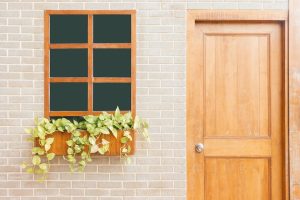Why Custom Floor Plans for Different Buyer Demographics are Important

According to the 2022 Zillow Consumer Housing Trends Report, 80% of successful property buyers expressed interest in viewing a home if the listing included a floor plan that they liked. This shows the importance of including real estate floor plans on web platforms to grab the attention of potential buyers.
In addition, customizing floor plans helps real estate professionals stand out in the market and create lasting value for their clients. By tailoring designs to reflect specific buyer demographics—whether families, young professionals, retirees, or multi-generational households. This approach enhances client satisfaction and also drives sales and increases property value. In this blog, we will explore the benefits of customizing floor plans for real estate professionals and how this strategy can lead to greater success in a dynamic market.
Benefits of Customizing Floor Plans for Different Buyer Demographics
1. Enhanced Market Appeal
Customizing real estate floor plans can boost the market appeal of properties. For example, a residential property for families will benefit from a spacious floor plan. In contrast, a commercial property will benefit from a floor plan showcasing storage rooms, reception, and other similar amenities to attract their respective target buyers. This customization, as per the property and its potential buyers, adds uniqueness and invites the listing viewer to explore further, ultimately leading to quicker and more competitive offers.
2. Increased Property Value
Homes with customized floor plans often command higher prices. Buyers are willing to pay a premium for properties that meet their exact specifications and offer enhanced functionality. Custom features such as dedicated home offices, gourmet kitchens, or luxurious master suites can significantly increase the perceived value of a home. Additionally, customization allows for the incorporation of high-quality materials and finishes that further boost property value. Real estate professionals can leverage these enhancements to justify higher listing prices, ultimately leading to increased profitability.
3. Improved Client Satisfaction
Client satisfaction is very important in the real estate industry, and customizing floor plans is a surefire way to achieve it. When buyers feel that their unique needs and preferences have been understood and met, their overall experience improves. This personalized approach not only meets but often exceeds buyer expectations, leading to higher levels of satisfaction. Satisfied clients are more likely to provide positive reviews, refer friends and family, and return for future real estate transactions. For real estate professionals, this means building a strong reputation.
4. Stronger Marketing Position
Offering customized floor plans can help real estate professionals gain a competitive edge in the market. In a competitive market, differentiation is key. Customization allows real estate agents and agencies to present their properties as unique and increase their appeal. Companies use these floor plans for real estate marketing to highlight the bespoke nature of these homes, emphasizing features that appeal to specific buyer demographics. This targeted approach can lead to more effective marketing campaigns, attracting serious buyers who are looking for a home that fits their lifestyle perfectly. By showcasing their ability to offer tailored solutions, real estate professionals can position themselves as industry leaders in innovation and client satisfaction.
What are Buyer Demographics?
The term buyer demographics refers to the characteristics of potential homebuyers that influence their purchasing decisions. These characteristics include age, income level, family size, lifestyle, and preferences. It is important for real estate professionals to know buyer demographics to meet the specific needs and desires of different groups. By analyzing factors such as life stage, occupation, and personal interests, agents can better predict what type of home and floor plan will appeal to each demographic, enhancing the likelihood of a successful sale.
Different Floor Plans for Different Buyers
Here are some specific buyer demographics you can asses to make customized floor plans according to their needs:
1. Family-Oriented Floor Plans
This specific section of buyers has distinct needs depending on their family members and the type of family they have (small or big). Their needs typically include multiple bedrooms and bathrooms, spacious living areas, and ample storage. Features such as a large kitchen, family room, and outdoor play areas are highly desirable. These homes often have a layout that promotes easy supervision of children, with bedrooms located near each other and open-concept spaces that allow for family interaction. Additionally, family-oriented designs might include safety features and proximity to schools and parks, making them particularly appealing to families with young children.
2. First-Time Homebuyers
This buyer demographic often seeks practical and affordable floor plans that maximize space and functionality. These buyers typically prefer smaller homes with efficient layouts that offer good value for money. Features like open floor plans, multi-functional rooms, and modern amenities are attractive to this demographic. Additionally, first-time buyers might look for properties that require minimal maintenance. Customizing floor plans to include energy-efficient appliances and low-maintenance materials can also appeal to this cost-conscious group.
3. Luxury Buyers
Buyers in this demographic are looking for high-end features and exclusive designs. Custom floor plans for this demographic often include expansive living spaces, gourmet kitchens, home theaters, wine cellars, and spa-like bathrooms. Attention to detail and high-quality finishes are crucial. These buyers appreciate unique architectural elements, smart home technology, and amenities that provide comfort and convenience. Luxury floor plans also often include guest suites, large outdoor entertainment areas, and premium locations, such as waterfront properties or gated communities. Making more elaborate floor plans can increase the chances of them buying.
4. Active Seniors
In this demographic, buyers include active seniors who seek floor plans that accommodate their lifestyle and physical needs. Single-story homes with open layouts, wide doorways, and accessible features are highly desirable. Features such as grab bars in bathrooms, non-slip flooring, and lever door handles can enhance safety and convenience. Additionally, active seniors often look for homes with low maintenance yards, proximity to healthcare facilities, and community amenities like fitness centers, walking trails, and social clubs. Customizing floor plans to support aging in place can make these properties particularly attractive.
5. Urban vs. Suburban Preferences
These buyers have distinct preferences when it comes to floor plans. Urban buyers typically prioritize convenience and proximity to amenities such as public transportation, shops, and restaurants. They may prefer compact, efficient layouts with modern designs and multi-functional spaces. In contrast, suburban buyers often seek larger homes with spacious yards, multiple bedrooms, and family-friendly features. They value privacy, outdoor space, and a sense of community. Customizing floor plans to reflect these preferences can help real estate professionals better meet the needs of their target market and enhance the appeal of their properties.
What’s Next?
By understanding the unique needs of different buyer groups, realtors can enhance property listings with a floor plan that is likely to resonate with potential buyers, resulting in quicker sales and stronger client relationships. In addition to 2D floor plans, real estate agents must also invest in 3D floor plans. They offer a more realistic, immersive view of properties, enabling buyers to visualize the space and its potential better, which compels businesses to include more customization in floor plans.
However, customizing floor plans requires expertise and software proficiency. Partnering with professionals for custom floor plan creation or 2D to 3D floor plan conversion services can help simplify the process.






